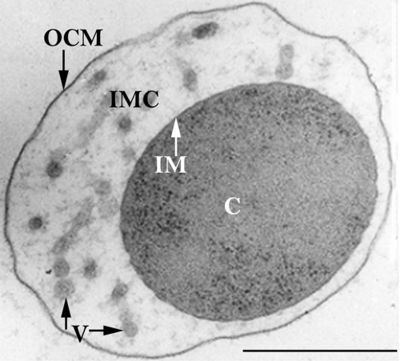Phylum Crenarchaeota | Kingdom Crenarchaeota Rank Genus | |
 | ||
Similar Nanoarchaeum equitans, Nanoarchaeota, Crenarchaeota, Staphylothermus, Korarchaeota | ||
Ignicoccus hospitalis and nanoarchaeum equitans ultrastructure cell cell interaction and 3d reco
Ignicoccus is a genus of Archaea living in marine hydrothermal vents. They were discovered in Kolbeinsey Ridge north of Iceland and in the Pacific Ocean (at 9 degrees N, 104 degrees W) in 2000 (Huber et al., 2000).
Contents
- Ignicoccus hospitalis and nanoarchaeum equitans ultrastructure cell cell interaction and 3d reco
- Systematics
- Cell structure
- Physiology
- References
Ignicoccus hospitalis and nanoarchaeum equitans ultrastructure cell cell interaction and 3d reco
Systematics
According to the comparisons of 16S rRNA genes, Ignicoccus represents a new, deeply branching lineage within the family of the Desulfurococcaceae (Huber et al., 2002). Three species are known, I. islandicus, I. pacificus and I. hospitalis strain KIN4I.
Cell structure
The archaea of the genus Ignicoccus have tiny coccoid cells with a diameter of about 2 µm, that exhibit a smooth surface, an outer membrane and no S-layer.
They have a previously unknown cell envelope structure—a cytoplasmic membrane, a periplasmic space (with a variable width of 20 to 400 nm, containing membrane-bound vesicles), and an outer membrane (approximately 10 nm wide, resembling the outer membrane of gram-negative bacteria). The latter contains numerous tightly, irregularly packed single particles (about 8 nm in diameter) and pores with a diameter of 24 nm, surrounded by tiny particles, arranged in a ring (with a diameter of 130 nm) and clusters of up to eight particles (each particle 12 nm in diameter) (Rachel et al. 2002).
Physiology
Ignicocci live in a temperature range of 70–98 °C (optimum around 90 °C). They gain energy by reduction of elemental sulfur to hydrogen sulfide using molecular hydrogen as the electron donor (Huber et al., 2002). A unique symbiosis with (or parasitism by) Nanoarchaeum equitans has also been reported (Huber et al., 2002).
